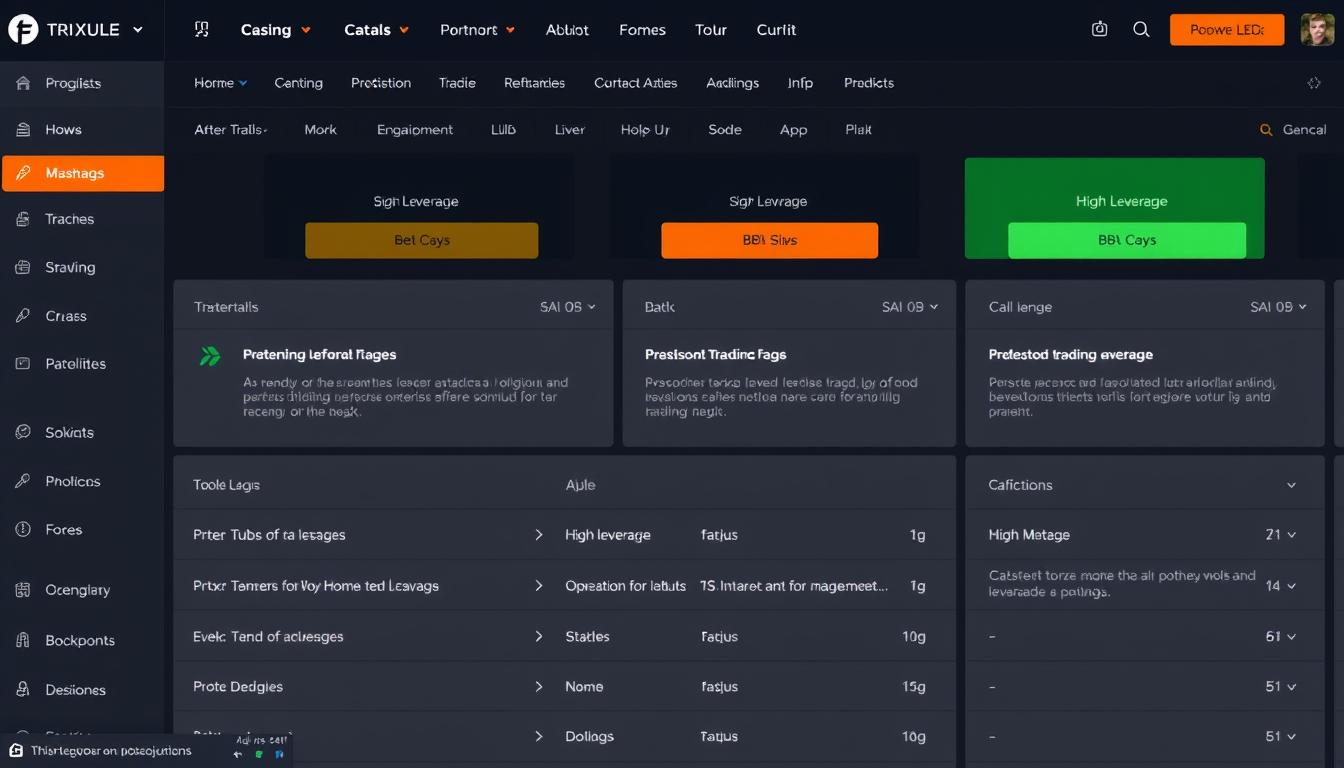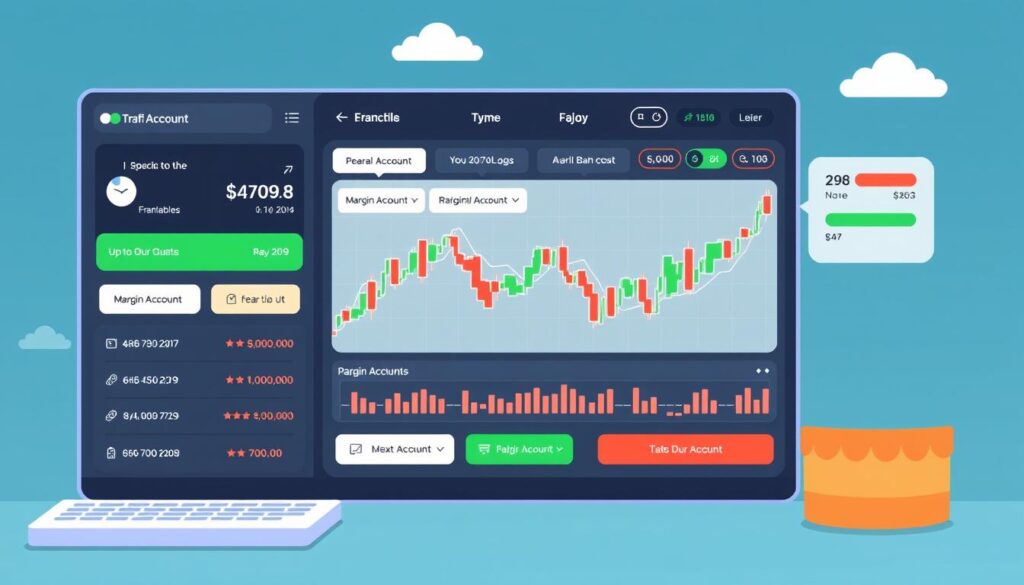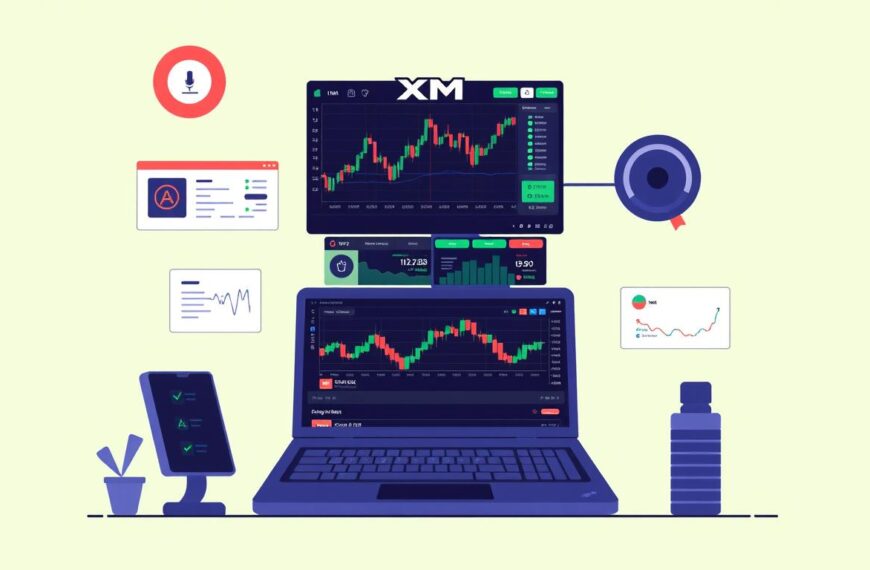The foreign exchange market, or forex, is the largest in the world, with over $5 trillion in currency exchanges daily. For traders, this market offers immense opportunities, but it also comes with significant risk. However, experienced traders know how to turn this risk into an advantage using leverage. By using a deposit, known as margin, traders can gain increased exposure to underlying assets, potentially amplifying their gains.
Leverage allows traders to control larger positions with a smaller amount of capital. For instance, with a leverage ratio of 100:1, a trader can control $100,000 worth of currency with just $1,000. This is made possible by forex brokers who provide the necessary capital, requiring traders to put up only a fraction of the trade’s value as margin.
Understanding leverage is crucial for anyone serious about trading in today’s financial markets. It’s not just about taking on more risk; it’s about strategically using capital to maximize potential returns.
Key Takeaways
- Leverage in trading allows for controlling larger positions with less capital.
- It involves using a deposit, or margin, to increase exposure to an underlying asset.
- Leverage can amplify both gains and losses, making risk management crucial.
- Forex brokers offer various leverage ratios, such as 50:1, 100:1, and 200:1.
- Understanding leverage is key to successful trading in financial markets.
Understanding Leverage: The Trader’s Power Tool
Leverage is a powerful financial tool that enables traders to control larger market positions with a relatively small amount of capital. This facility is particularly appealing to traders as it allows them to potentially amplify their gains, although it also increases the risk of significant losses.
What Is Leverage in Trading?
Leverage in trading refers to the use of borrowed capital to increase the potential return of an investment. When traders use leverage, they are essentially borrowing money from their broker to increase their trading position, thereby amplifying potential gains. However, this also means that potential losses are magnified.
The Leverage Ratio Explained
The leverage ratio is a critical concept in leveraged trading. It represents the proportion of the trader’s funds to the size of the trade. Common ratios include 1:10, 1:50, and 1:100. For instance, a leverage ratio of 1:100 means that for every dollar in the trader’s account, they can control $100 in the market.
Margin vs. Leverage: Key Differences
While often used interchangeably, margin and leverage are distinct concepts. Margin refers to the actual amount of money required to open a leveraged position, acting as a good faith deposit. Leverage, on the other hand, is the multiplier applied to the margin to determine the total size of the trade. Understanding the difference is crucial for effective trading strategies.
In conclusion, leverage is a double-edged sword in trading. While it offers the potential for amplified gains, it also exposes traders to higher risks. By understanding how leverage works, including the leverage ratio and the distinction between margin and leverage, traders can better navigate the complexities of leveraged trading and make more informed decisions.
The Double-Edged Sword: Benefits and Risks
In the world of trading, leverage stands out as a powerful tool that can amplify gains but also exacerbate losses. It is a dual-edged sword that can work for or against you, depending on how it is wielded.
Amplified Returns: The Upside Potential
The primary allure of leverage lies in its ability to generate significant profits with relatively small capital investments. By using borrowed money, traders can control larger positions, potentially leading to amplified returns. For instance, with a leverage ratio of 100:1, a trader can control $100,000 worth of assets with just $1,000.
Magnified Losses: The Downside Reality
However, the flip side of leverage is that it can also magnify losses. If a trade moves against a leveraged position, the losses can be substantial, potentially exceeding the initial investment. This risk is particularly pronounced in volatile markets where prices can fluctuate rapidly.
When Leverage Makes Sense
Leverage makes strategic sense in certain market conditions and trading scenarios. Experienced traders who understand the risks and have a solid risk management strategy can benefit from using leverage to maximize their returns. It is crucial for traders to assess their risk tolerance and adjust their use of leverage accordingly.
| Leverage Ratio | Potential Gain | Potential Loss |
|---|---|---|
| 10:1 | 10% | -10% |
| 50:1 | 50% | -50% |
| 100:1 | 100% | -100% |
Understanding the mathematical relationship between the leverage ratio and potential profit/loss scenarios is crucial for traders. By carefully managing their use of leverage, traders can mitigate risks while capitalizing on opportunities for significant profits.
Markets Where High Risk High Reward Leverage Thrives
Different financial markets offer unique opportunities for leverage trading. The key to successful leverage trading lies in understanding the nuances of each market and the leverage options available.
Forex: The Leverage King
The Forex market is renowned for offering some of the highest leverage ratios in the financial markets, with ratios up to 30:1 for the most liquid currency pairs. This makes it a popular choice for traders seeking to maximize their trading power.
Stocks and Indices: Strategic Leverage
Stock market leverage typically starts at around 5:1, making it slightly less risky compared to Forex. Traders use margin accounts and CFDs to leverage their positions in stocks and indices, allowing for strategic investment decisions.
Commodities and Cryptocurrencies: Volatile Opportunities
Commodities and cryptocurrencies are known for their volatility, presenting both risks and opportunities for traders. Leverage can amplify returns in trending markets, but it requires careful risk management.
ETFs and Bonds: Lesser-Known Leverage Options
ETFs and bonds offer additional leverage opportunities, though they are less commonly associated with high leverage trading. Specific instruments and strategies are used in these markets to maximize returns.
Market liquidity significantly affects the leverage ratios offered by brokers across different asset classes. Understanding these dynamics is crucial for traders to make informed decisions.
The impact of market hours and trading sessions on leveraged trading strategies in global markets cannot be overstated. Traders must adapt their strategies to the specific market conditions.
Real-World Leverage Example: The Power of 100x
High leverage trading, such as using 100x leverage, can be both exhilarating and terrifying, as it magnifies every market movement. To illustrate this, let’s consider the story of Peter, a trader who decides to invest $1000 in Tesla stock using 100x leverage.
Meet Peter: A Trader’s Story
Peter is a trader who is seriously considering investing $1000 in Tesla stock. By using 100x leverage, he can control a position worth $100,000. This means for every dollar Peter invests, his broker gives him $100 to trade with. The potential for amplified returns is significant, but so is the risk.
With his leveraged position, if Tesla’s stock price increases by 1%, Peter will gain $1000, effectively doubling his initial investment. A 10% increase in Tesla’s stock price would yield a $10,000 profit, a tenfold return on his initial $1000 investment.
The Math Behind the Money
Let’s examine the mathematics behind Peter’s trade. With 100x leverage, a $1000 investment controls a $100,000 position. The impact of price movements on Peter’s account balance is substantial.
| Price Change | Profit/Loss | Account Balance |
|---|---|---|
| +1% | $1000 | $2000 |
| +10% | $10,000 | $11,000 |
| +50% | $50,000 | $51,000 |
| -1% | -$1000 | $0 |
This table illustrates how different price movements affect Peter’s account. A 1% adverse movement could liquidate his entire position, highlighting the high risk associated with high leverage trading. Conversely, a 50% increase in Tesla’s stock price, such as occurred between January 16, 2023, and February 1, 2023, would result in a $50,000 profit, turning Peter’s initial $1000 into $51,000.
It’s crucial for traders like Peter to understand the mathematical implications of leverage and to employ effective risk management strategies to mitigate potential losses.
Smart Leverage: Essential Risk Management Techniques
To harness the full potential of leverage, traders must adopt robust risk management strategies. Leverage can amplify both gains and losses, making it a double-edged sword in trading. Effective risk management is crucial to navigating the challenges posed by leverage.
The 1% Rule: Your Trading Lifeline
The 1% rule is a fundamental risk management technique that advises traders to risk only 1% of their total capital on any single trade. For instance, with a $1000 account, the maximum loss per trade should be $10. This rule helps traders survive consecutive losses without depleting their capital. By limiting the loss to 1%, traders can withstand multiple losing trades, which is essential for long-term survival in the markets.
Strategic Stop-Loss Placement
Strategic stop-loss placement is another critical aspect of risk management. Rather than setting arbitrary stop-loss levels, traders should consider the volatility of the market. Volatility-based stops adapt to current market conditions, reducing the likelihood of being stopped out by normal market fluctuations. This approach helps in minimizing unnecessary losses.
Position Sizing for Survival
Position sizing is directly related to risk management and involves calculating the appropriate size of a position based on the account size, risk tolerance, and stop-loss distance. Proper position sizing ensures that traders do not over-leverage their accounts, thereby reducing the risk of significant losses. It’s a mathematical approach that helps traders manage their exposure and maintain a healthy trading account.
By implementing these risk management techniques, traders can transform high-leverage trading from a gamble into a strategic investment. The psychological benefits of proper risk management include reduced emotional trading and clearer decision-making, allowing traders to stay focused on their long-term goals.
Top 5 Leverage Trading Strategies That Actually Work
Effective leverage trading requires a combination of strategy and risk management. Professional traders use various techniques to maximize their returns while minimizing risk. Here, we’ll explore five proven leverage trading strategies that can help you achieve consistent profits.
Momentum Trading: Riding the Wave
Momentum trading involves identifying strong trends and riding them out. Momentum is crucial because it allows traders to stay on the right side of the trade, minimizing the need for constant monitoring. To implement this strategy, look for markets with clear upward or downward momentum, and use technical indicators to time your entries and exits.
Breakout Trading: Where the Money Is Made
Breakout trading is a highly effective strategy for leveraging trades. Breakouts occur when the price moves beyond a established level of support or resistance, often resulting in significant price movements. To trade breakouts effectively, identify key levels, wait for confirmation of the breakout, and manage your risk with appropriate stop-loss orders.
Support/Resistance Level Trading
Trading based on support and resistance levels involves buying or selling at these critical price points. Support levels are where the price tends to bounce back, while resistance levels are where the price often encounters selling pressure. By identifying these levels and trading accordingly, you can capitalize on the predictable behavior of the market.
The 80/20 Rule: Focus on High-Probability Setups
The 80/20 rule suggests that 80% of your profits come from 20% of your trades. Focus on high-probability setups by analyzing historical data and identifying patterns that have led to successful trades in the past. This strategy helps you allocate your capital more effectively, maximizing returns on your most promising trades.
Scaling Leverage Based on Opportunity Quality
Scaling your leverage according to the quality of the trading opportunity is a sophisticated strategy used by professional traders. Increase your position size and leverage for trades with high conviction, while reducing them for less certain trades. This approach allows you to maximize returns on your best trades while managing overall risk.
By incorporating these strategies into your trading plan, you can enhance your leverage trading performance. Remember, the key to success lies in combining effective strategies with robust risk management techniques.
- Momentum trading: Identify strong trends and ride them out.
- Breakout trading: Capitalize on significant price movements following a breakout.
- Support/resistance level trading: Trade based on predictable market behavior at key price levels.
- The 80/20 rule: Focus on high-probability setups to maximize returns.
- Scaling leverage: Adjust your leverage based on the quality of the trading opportunity.
Avoiding the Leverage Trap: Common Mistakes
The strategic use of leverage is crucial; otherwise, it can become a trader’s worst enemy, resulting in substantial losses. Traders who use high leverage strategies are often motivated by fake advertising of quick profits, leading to overconfidence and overtrading. This, combined with emotional decision-making, results in bad trading decisions and significant losses most of the time.
Overtrading: The Account Killer
Overtrading is a primary account killer when it comes to leverage trading. The ease of opening leveraged positions can lead to excessive trading frequency and poor selection criteria. Traders must be cautious not to overtrade, as this can quickly deplete their trading account.
Ignoring Volatility in Stop-Loss Placement
Choosing a stop-loss according to volatility is crucial. In high volatility, a wide stop is necessary, while in low volatility, a tighter stop can be used. Many traders fail to adjust their stop-loss distance based on current market conditions, leading to premature stop-outs or insufficient protection against significant losses.
Emotional Decision-Making Under Pressure
Emotional decision-making is another critical pitfall. Fear and greed can cause traders to make irrational decisions, such as moving stops or averaging down on losing trades. This can exacerbate losses and lead to poor trading outcomes. Maintaining a disciplined approach to trading, even under pressure, is essential for long-term success.
To avoid these common mistakes, traders must adopt a disciplined trading strategy that includes proper risk management techniques, such as appropriate position sizing and strategic stop-loss placement. By understanding the risks associated with leverage and avoiding these pitfalls, traders can better navigate the challenges of leverage trading and improve their chances of success.
Beginner vs. Pro: How Experience Changes Leverage Approach
The approach to leverage in trading undergoes a significant transformation as traders gain experience. Beginners typically start with a cautious approach, often avoiding leverage or using it minimally. This conservative strategy allows them to develop essential trading skills and risk management techniques without exposing themselves to excessive risk.
Starting Small: The Beginner’s Path
For novice traders, starting without leverage is a prudent strategy. It enables them to hone their trading skills, understand market dynamics, and develop a disciplined approach to trading. As one experienced trader noted,
“The key to successful trading is not to focus on making huge profits from the outset but to survive and learn from your mistakes.”
Trading withoutleveragehelps beginners to manage risks effectively and build a solid foundation for future growth.
Scaling Up: The Professional’s Perspective
In contrast, professional traders have a more nuanced approach to leverage. They selectively apply leverage based on market conditions, the quality of their trading setups, and their risk assessment. Professionals understand that leverage is a tool, not the primary driver of profits. They use it judiciously, always keeping in mind the importance of capital preservation. As traders gain experience, they develop the ability to scale their use of leverage in line with their strategy’s performance metrics, ensuring that their approach remains adaptive and responsive to market conditions.
Building Your Leverage Trading Playbook
Developing a leverage trading playbook is crucial for consistent success in the markets. A comprehensive playbook helps traders make informed decisions, manage risk, and maximize returns.
Documenting Your Best Setups
Documenting your most successful trading strategies is essential for refining your approach. This involves detailing market conditions, entry criteria, stop-loss placement, and target objectives. By internalizing these setups, you’ll become more effective at identifying future opportunities. For instance, writing down your setups on a piece of paper or computer helps you remember the build-up for the next time it occurs in the market.
- Record the market conditions preceding the trade
- Note the entry and exit points
- Detail the risk management strategies employed
Market Specialization: Master One Before Many
Mastering one market or instrument before expanding to others is a key trading strategy. Focusing on a single market allows you to learn its behavior, trends, and patterns, leading to better results when using leverage trading. Jumping between different currency pairs or stocks can be counterproductive, as it dilutes your understanding of each market.
Creating Your Personal Risk Framework
Establishing a personal risk framework is vital for managing risk in leverage trading. This involves defining your maximum leverage, position sizing, and risk limits based on your trading strategy and risk tolerance. A well-structured risk framework helps you navigate the markets with confidence.
- Determine your maximum leverage
- Set appropriate position sizes
- Establish risk limits
By following these guidelines and continually refining your playbook, you’ll be better equipped to handle the challenges of leverage trading and achieve consistent success in the markets.
Conclusion: Transforming Risk Into Opportunity
Leverage, when wielded with precision and caution, transforms from a perceived risk into a powerful tool for traders. Throughout this guide, we’ve explored the intricacies of leveraged trading, from understanding the basics of leverage and margin to developing sophisticated trading strategies.
The key to harnessing leverage effectively lies in balancing potential gains with prudent risk management. By adopting a disciplined approach and continually adapting to market conditions, traders can maximize their capital efficiency and trading potential.
It’s crucial for traders to start small, refine their skills, and gradually increase their leverage as they gain experience. The financial markets are ever-evolving, and so should be the strategies employed by traders. By doing so, traders can ensure that leverage remains a valuable ally in their trading journey, rather than a source of significant loss.








